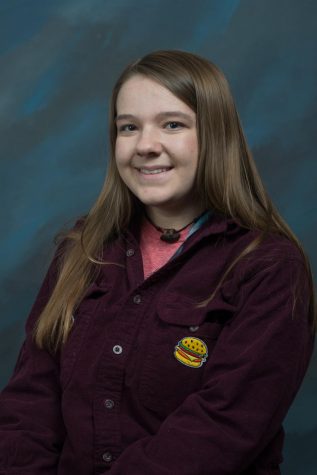The Importance of ASL

Photo caption: The Mousavi girls work with a doctor, examining a diagram of the ear, after receiving their implants. Photo cred: St Luke’s
May 23, 2018
When a student chooses a language to take for their high school credit, the first options that come to mind are Spanish, French, or perhaps German or Mandarin. Some particularly passionate musicians even consider music a language, though the school board doesn’t.
American Sign Language has been overlooked, mostly because there aren’t many, if any deaf kids at Boise High and most students don’t even consider it. It may seem like learning sign language is as useless as learning Ancient Egyptian, but we aren’t always going to be stuck here where we don’t often come into contact with people who speak it.
Therefore, it seems students should at least have the option to learn to sign. Imagine if the whole world could speak it- language barriers would be instantly eradicated.
The first step to reaching out to the deaf population would definitely be offering sign language for all high school students. It’s such a useful, simple way to gain understanding of others. While dual-credit option courses are offered at CWI and smaller colleges in the Boise area, it is not easy for teenagers to find a course to learn it. Ruby Henderson, a sophomore, took a course to learn it last year. She said, “I wanted to learn it because my aunt is fluent and it always seemed so beautiful…”
It’s not a useless skill to learn either. According to 360 Translations, more than 17 percent of Americans deal with hearing-loss. Thus, it’s likely you will come into contact with someone who speaks it or could learn to. The possibilities are endless- elderly with hearing loss and babies alike could use it to communicate.
The reasons for learning it don’t end there, however. National Association of the Deaf says ”…there’s always a demand for skilled interpreters who can sign fluently and read another person’s signing well.” Interpreters are being used in a variety of new environments like schools and workplaces. So, if sign language doesn’t just expose you to a whole new community, it could potentially lead to a career path.
Fateme Mousavi moved here from Turkey several years ago along with her parents and younger sister, Zahra. Learning English wasn’t her only obstacle; she had to learn to sign more officially in order to communicate with the students and teachers in her deaf program. Born deaf in both ears, Fateme had grown up signing to her parents and also deaf sister, in a sort of made up sign language.
While both girls were lucky enough to receive cochlear implants from St. Luke’s here in Boise, their hearing problems aren’t completely gone. They can hear better but not fully. While learning English doesn’t help talking much, as speaking is difficult, signing is their main way of communication. They both speak Farsi natively, though are working to keep learning English. It’s hard enough that they had to move away from their homes, and now have to deal with 2 new ways of communicating. Doubtlessly, both girls would feel less foreign and alone moving here to find there were other teens who could sign with them.
Overall, it’s pretty clear that the reach of sign language goes further than you’d think. Learning it opens up many doors, broadens your mind to a community that is often overlooked, and offers empathy to those with hearing problems.



MARY STELL • Sep 28, 2018 at 4:18 pm
Great article, Georgia! One time when I was a hospital volunteer in a big county hospital in Dallas, I “signed in Spanish” using the sign language alphabet. I wish I knew American Sign Language. I helped instruct a man on getting his bus pas and medicines from the pharmacy, and told him how to take his meds. That may be the most helpful I’ve ever been! I just wish I hadn’t been wearing that embarrassing peach pinafore! JK, it was fun.